|
Since I've moved to Dutchess County, NY, I've been noticing two beautiful swans that float around on a large pond along Freedom Road in Pleasant Valley. I wondered what kind of swans they are. I had some familiarity with Trumpeter Swans previously because I used to read The Trumpet of the Swan by E. B. White with my classes when I taught at the middle school level. Seeing the two swans near my new home motivated me to research them. I learned that, although Trumpeter Swans can be found in NY, the swans I was regularly seeing were Mute Swans, a species that now lives here year round. Swans are WaterfowlSwans are birds of the family Anatidae, which includes geese and ducks. Waterfowl, such as these, are adapted for swimming, floating on the water surface, and in some cases diving in shallow water. Cranes, Egrets, Flamingos, and Herons are also found in watery environments, but are not considered waterfowl because they have long legs and wade in the water, rather than swimming and floating in it. Types of SwansThere are six living swan species. They are Cygnus melancoryphus (Black-Necked swan), C. atratus (Black swan), C. olor (Mute swan), C. buccinator (Trumpeter swan), C. cygnus (Whooper swan), and C. columbianus (Tundra swan). Only Mute, Trumpeter, and Tundra Swans can be found in the "wild" in New York State. 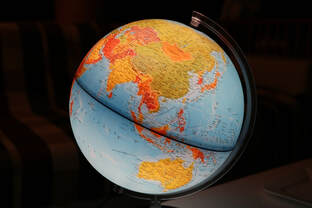 Those species which live in the Northern Hemisphere have pure white plumage; those which live in the Southern Hemisphere are black and white. Discuss swans during a unit on evolution!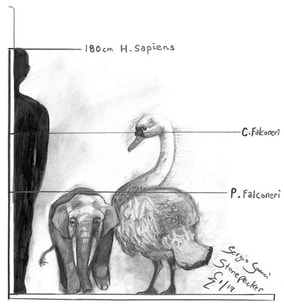 The extinct Cygnus falconeri was the largest species of swan. It was a flightless giant which left fossil evidence of its presence on the Mediterranean islands of Malta and Sicily. Its disappearance is thought to have resulted from extreme climate fluctuations or the arrival of superior predators and competitors.  What type of swans live closest to you? The Swans You Know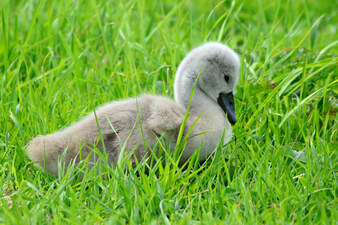 Perhaps the best known story about a swan is the Danish fable "The Ugly Duckling" by Hans Christian Andersen, first published in 1843. It is a tale about a grey duckling who, when hatched along with his yellow brothers and sisters, is ridiculed because they perceive him as ugly. He wanders off alone and suffers from loneliness. When he becomes mature he discovers that he is, instead, a swan, and he is accepted among others of his kind. The descriptor “black swan” is sometimes used as a metaphor or analogy for an unexpected event or an outlier. The Roman satirist, Juvenal (c. 55 – 127 AD), is credited with making a sarcastic reference to a “good woman” being a "rare bird, as rare on earth as a black swan”. (The existence of black swans among Europeans was unknown until their “discovery” in 1697). His reference eventually lead to the term “black swan” in today’s usage. 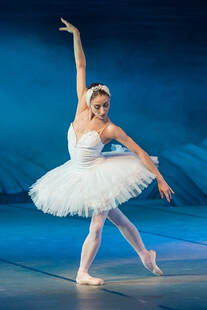 The classical ballet Swan Lake contains the lead dual roles of Odette, the white swan, and Odile, the black swan, which represent good and evil. Students in your classroom could be challenged to give an example of something that they could describe as a “black swan” and tell the reason why they think so. mute swans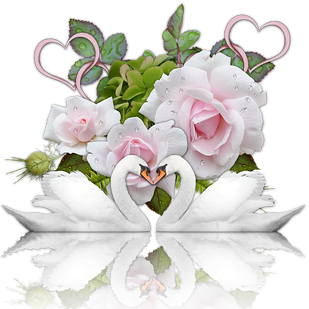 Whether pictured on a greeting card, as a wedding day centerpiece, or serenely floating in a pond at your local park, the type of swan you are most likely to see in the Northeastern US is Cygnus olor, more commonly known as a Mute Swan. “The Ugly Duckling” was a Mute Swan. He gradually gained his white plumage, like other grey cygnets (baby swans) do. Mute Swans: Homebodies and Heavy Eaters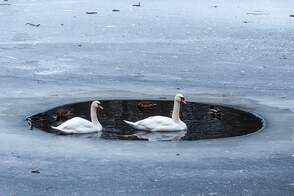 Mute Swans are non-migratory. Breeding pairs will remain in inland waters into winter if open water remains and there are adequate food sources. When inland water freezes, the swans will temporarily relocate to coastal areas or major river flows where open water is available. The diet of Mute Swans consists of submerged aquatic vegetation (SAV) found in water as deep as 4 feet. They eat a variety of plant species and consume about 4-8 pounds of vegetation daily, sometimes uprooting plants completely. Often, adult swans will uproot more plants than they actually consume. Mute Swans are a Non-Native Invasive Species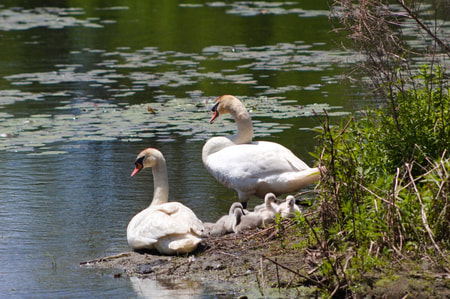 Their beauty is the reason why Mute Swans were imported from Europe in the late 1800s and brought to parks, large estates, and zoos. Their aesthetic value was prized in New York's lower Hudson Valley and Long Island. Mute Swans were used to help decorate the urban and suburban landscapes. Even today, they are the swans most often found on Northeastern ponds and lakes....like these two adults with their little cygnets seen from Freedom Road in Pleasant Valley! Pleasant Valley Mute Swans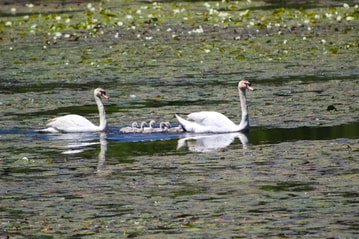 Most Mute Swans remain with the same mate for life. The Freedom Road Swans with their 2023 brood are pictured here. trumpeter swansThe Trumpeter Swan (Cygnus buccinator) is the largest living species of waterfowl. Adults weigh between 15-30 pounds, making Trumpeters the heaviest flying birds in the world. Cygnus buccinator is the US counterpart of the Whooper Swan (Cygnus cygnus) from Eurasia. Some authorities consider the two birds the same species. 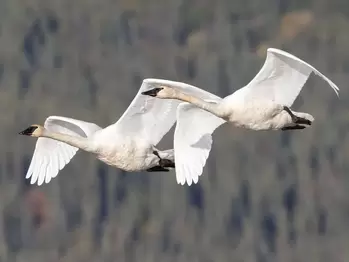 Trumpeters prefer nesting sites without human disturbance and shallow waters with easily accessible food. Some populations of Trumpeters Swans breed and then overwinter at other ice-free coastal or inland water locations. Other populations of Trumpeters don’t migrate. TrumpetingTrumpeter Swans are loud, musical creatures. Their cry sounds like a trumpet! Acoustic communication is very common among all ages of the species. Their calls are distinct and have a variety of functions. When a swan is alarmed or feels threatened, the call acts as a warning and deterrent, due to its abrupt volume. During mating, pairs of swans may begin trumpeting separately. These calls evolve into a duet and it is difficult to tell the individual calls apart. 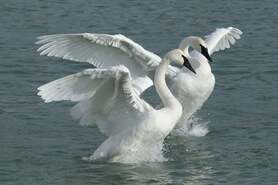 This performance of the pair is associated with head bobbing and wing movements, which are part of courtship. Also, the duet can aid in the coordination of a duel attack on a predator that is too close to the nest of a mated pair. Conservation Status 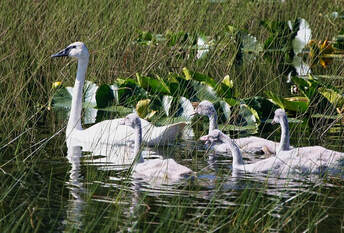 In the 19th and early 20th centuries, the Trumpeter Swan was hunted heavily for sport, meat, skin, quills, and feathers. The species is also unusually sensitive to lead poisoning. Although the Trumpeter Swan population has rebounded, one impediment to their success is the presence of a growing non-native Mute Swan population, who compete for habitat. tundra swansThe Tundra Swan (Cygnus columbianus) is a small swan (7-22 pounds) that inhabits areas within the Northern Hemisphere. It is sometimes split into two species, the Whistling Swan (C. columbianus) of North America, and the Bewick’s Swan (Cygnus bewickii) of Eurasia. The Bewick's Swan has more yellow on its bill and is slightly smaller than the Whistling Swan. It breeds in Siberia and winters in Western Europe. The Whistling Swan has an almost fully black bill with a small yellow patch and breeds in arctic/sub-arctic Canada/Alaska and winters in North America. Conservation StatusAlthough Tundra Swan numbers are stable over most of their range, they are increasingly dependent on agricultural crops to supplement their winter diet. This is because the aquatic vegetation in their winter habitat has dwindled due to habitat destruction and water pollution. Those are themes I frequently discuss when teaching Ecology. Know your swan!If you find an occasion to teach your students about swans, you may also appreciate the opportunity for cross-curricular activities. Besides the obvious relationship to Ecology, you could also discuss scale (Math), as well as providing an Art tie-in, with model-building. New york swans: PHYSICAL DIFFERENCES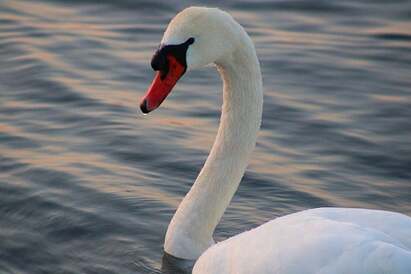 Mute Swans have bright orange bills and a distinctive (basal) knob on their forehead. Neither Trumpeter nor Tundra Swans have orange bills or basal knobs.
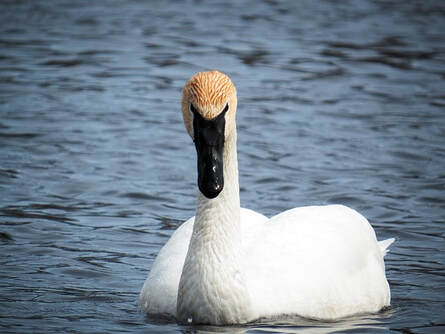 Trumpeter Swans are the largest bird native to New York. They weigh twice as much as Tundra Swans.
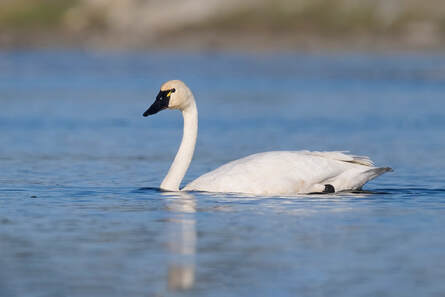 Tundra Swans are significantly smaller than Trumpeter Swans.
Make a model swanCheck out our Swan enrichment activities which can help students create a Mute, Trumpeter, or Tundra Swan model that shows the distinguishing characteristics that these swans possess. Each of the swan learning activities contains similar directions for making the relavant swan models out of paper-mâché clay, as well as directions for making home-made paper-mâché clay. 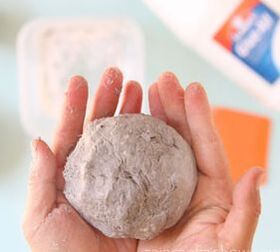 Materials necessary include cardboard, newspaper, packing paper, and a projector, as well as paper-mâché clay. The directions for making paper-mâché clay are also included. 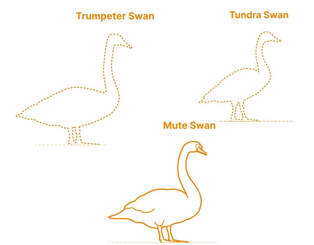 To make the swan models, students will need to familiarize themselves with the distinguishing physical characteristics of the relevant swans. Then they can use one of the outlines provided and project the image onto a large piece of cardboard so they can trace the image and cut it out. They then create a rough three-dimensional model (armature) using their two-dimensional swan image. Once that is complete, they will need to mold their home-made papier-mâché clay around their model and smooth out the form of the relavant Swan. After their model swan dries, they can paint it. These swan lessons are a fun way for students to learn about their local ecology!
0 Comments
Leave a Reply. |
AuthorGertrude Katz has spent over 30 years teaching K-12 public school students all major subjects. She has taught biology and education at the college level. The majority of her career has been spent instructing biology at the secondary level. Categories
All
|
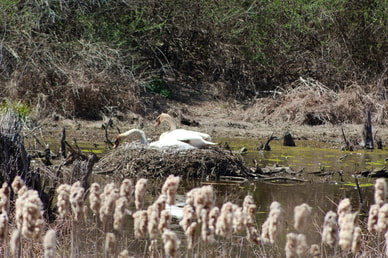
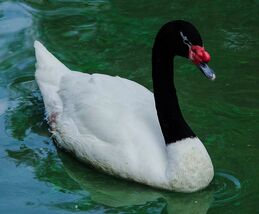
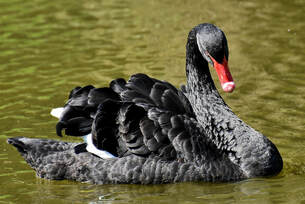
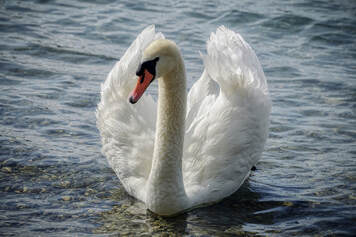
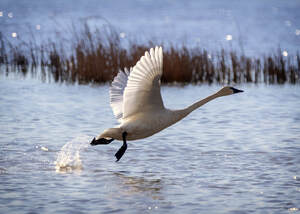
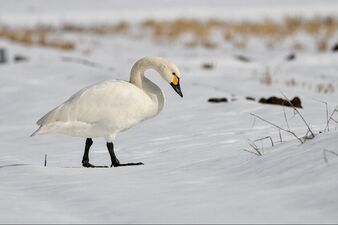
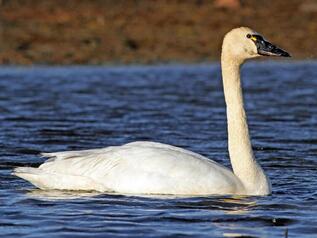
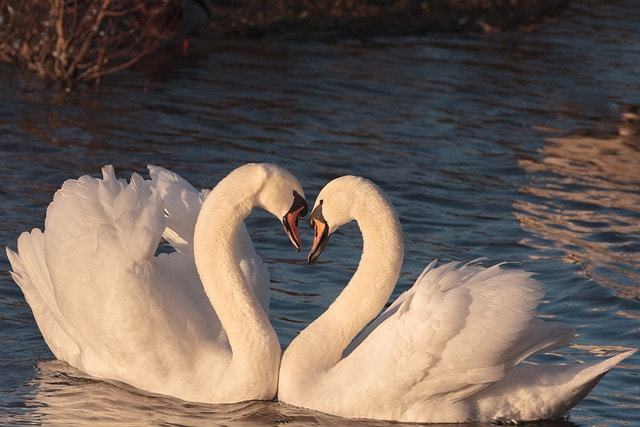
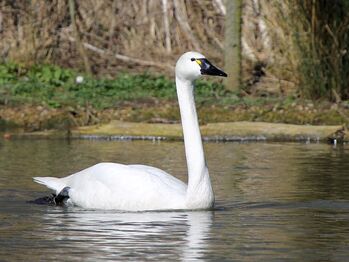
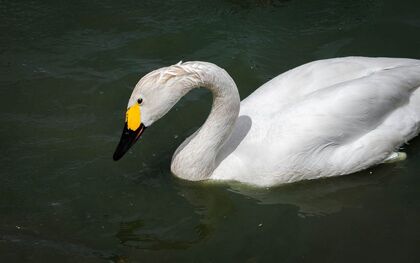
 RSS Feed
RSS Feed